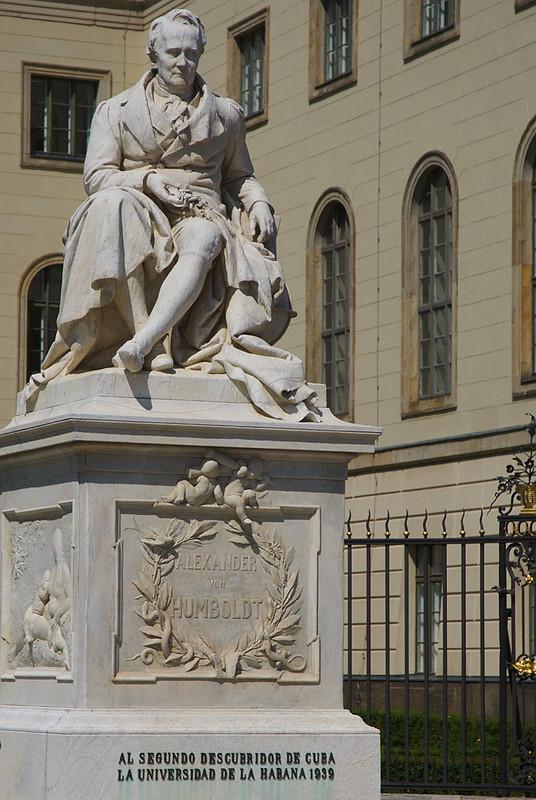by Emily Davis, SPG treasurer
Until I received the Invention of Nature by Andrea Wulf as a gift, Alexander von Humboldt barely registered in my brain. I had heard of Humboldt and the Humboldt Current and the Humboldt penguin, but that was about it. This year, 2019, is the 250th anniversary of his birth and I was reminded of this amazing scientist and that fabulous book this past month when I heard Andrea Wulf speak at the Pennsylvania Academy of the Fine Arts (PAFA). The program was cosponsored by the German Society of Pennsylvania which I mention because Germany is really celebrating this anniversary.
Humboldt influenced many people including scientists and writers. Charles Darwin said he would not have boarded the Beagle if he hadn’t read Humboldt’s Personal Narrative. John Muir, eager to travel and explore said, “How intensely I desire to be a Humboldt” and had filled his copies of Views of Nature and Cosmos with annotations. Henry Davis Thoreau had also read those 3 books, but he did his explorations at home.
Many of Humboldt’s ideas were developed during his 5 years in South America where he and Aimé Bonpland, a French botanist he met in Paris in 1798, traveled more than 6,000 miles. He saw nature as a living being with biotic and abiotic elements knitted together. When he climbed Mt Chimborazo in Ecuador (then believed to be the highest mountain in the world) he saw the similarities in the way organisms changed as he traveled up in altitude or to northern latitudes (see the amazing chart, Naturgemälde, here). But what amazed me most was that Alexander von Humboldt recognized that humans can cause the climate to change. Through measurements and interviews, he recorded how the cycle of deforestation and intensive agriculture decreased the amount of water, changed or stopped its flow, depleted the soil and changed the habitat and weather.

Photo by flicker user Oscar Cuadrado Martinez
Humboldt even has a connection with Philadelphia. In 1804, on his way home after 5 years traveling in Central and South America, he visited Charles Wilson Peale (1741-1827). Peale was a well-known scientist and artist who had founded the Philadelphia Museum which housed a collection of botanical, biological, and archaeological specimens. Peale organized a trip to Washington so Humboldt could speak with Thomas Jefferson. Humboldt and Bonpland spent the next week meeting and socializing with Jefferson and members of his cabinet. Jefferson, Madison and Gallatin were particularly interested in learning about Mexico since the Louisiana Purchase meant that the two countries now shared a border. Peale also painted a portrait of Humboldt that now hangs in the National Gallery at the Smithsonian though the portrait is owned by the Műtter Museum (see here).
Through all of his travels, he collected specimens, made drawings and took measurements using a wide variety of instruments to record facts about each place he visited. Some of the items collected by Humboldt now reside in Paris' Natural History Museum and Berlin's Botanical Garden. The Herbarium at the Botanical Garden still houses more than 3,000 of the specimens from his trips. Humboldt was one of the first scientists to include the exact location and altitude at which each plant specimen was collected. His written record lives on in Personal narrative of travels to the equinoctial regions of America, during the years 1799-1804 as well as 23 volumes of scientific records.
I found Andrea Wulf’s book fascinating but you do not have to take my word for it. The New York Times listed it as one of the ten best books of 2015. The book has also won more than 20 awards including Royal Society Science Book Prize 2016.
Wulf, Andrea. The Invention of Nature. Alexander von Humboldt's New World. Alfred A Knopf, NY 2015.
Thumbnail photo: public domain from Wikicommons
This blog was included as part of the 2020 Winter Sylvanian newsletter. Please click here to check out more articles from this edition!